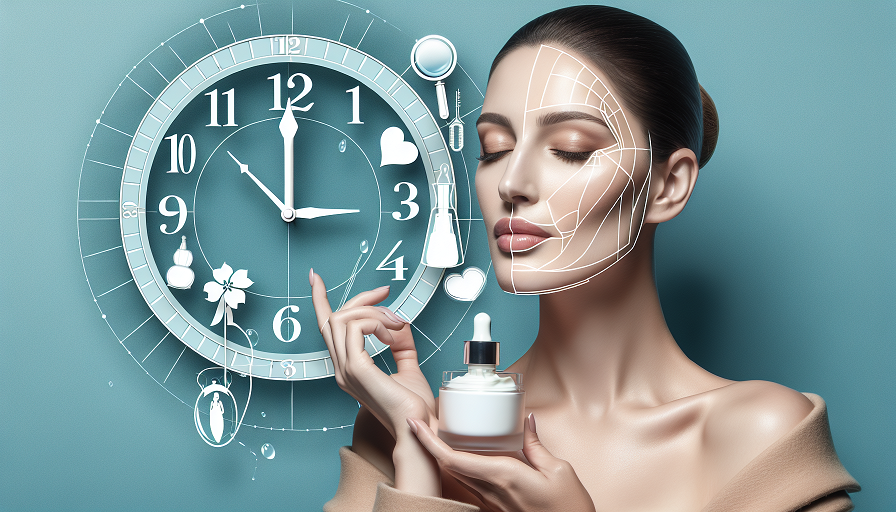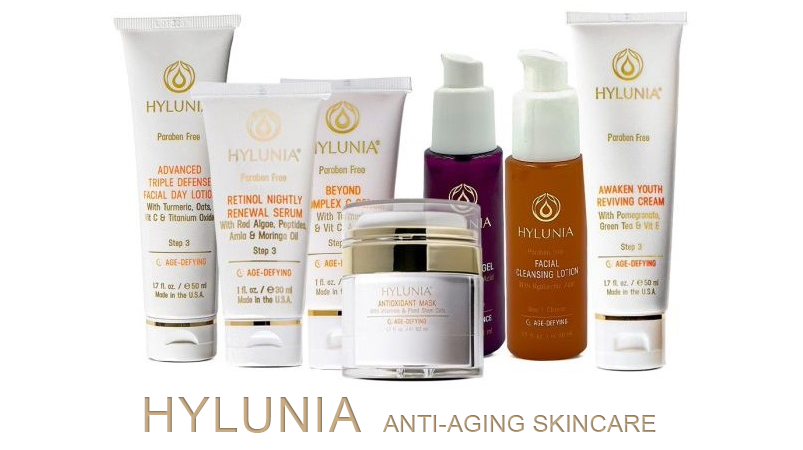
As skin ages, it naturally loses moisture and begins to look a bit, well, tired. Fine lines, dryness, and that dull appearance can make you feel like your skin just doesn’t have the same “bounce” it once did. The good news is that certain hydrating ingredients can help revive your skin, giving it a smoother, plumper, and more youthful look.
Contents
- Hyaluronic Acid: The Moisture Magnet
- Glycerin: A Trusted Classic for Hydration
- Panthenol (Pro-Vitamin B5): The Skin Soother
- Squalane: A Lightweight Oil with Heavyweight Hydration
- Aloe Vera: Nature’s Hydrator and Healer
- Ceramides: The Skin Barrier Builders
- Urea: The Unsung Hero for Deep Hydration
- Additional Tips for Maximizing Hydration
Hyaluronic Acid: The Moisture Magnet
If you’ve heard of hyaluronic acid, you’re not alone—this ingredient has become a favorite in the skincare world for good reason. Known as a “moisture magnet,” hyaluronic acid can hold up to 1,000 times its weight in water, which makes it incredibly effective at hydrating the skin.
How Hyaluronic Acid Works
Hyaluronic acid is a humectant, meaning it pulls moisture from the environment into the skin, keeping it hydrated and plump. It works especially well in humid climates, where there’s plenty of moisture in the air. But don’t worry—even in dry climates, it helps maintain the water already present in your skin.
When and How to Use Hyaluronic Acid
For best results, apply hyaluronic acid on slightly damp skin to help it attract more moisture. Follow up with a moisturizer to lock it all in. This ingredient is gentle and works well for all skin types, so you can use it morning and night without worry.
Glycerin: A Trusted Classic for Hydration
Glycerin is one of the most underrated hydrating ingredients out there. It’s been used in skincare for decades and is known for its ability to keep skin soft, smooth, and hydrated.
Why Glycerin is Great for Aging Skin
Glycerin is another humectant, drawing water into the skin’s outer layer. It doesn’t just moisturize; it also helps strengthen the skin barrier, which is crucial as our skin becomes more vulnerable with age. By keeping the skin barrier intact, glycerin helps prevent water loss, making your skin look fuller and more resilient.
Using Glycerin in Your Routine
You’ll find glycerin in everything from cleansers to serums and moisturizers. It’s generally safe for all skin types and pairs well with other hydrating ingredients like hyaluronic acid and aloe vera. Look for it in products that stay on your skin, like serums and creams, so it has time to work its magic.
Panthenol (Pro-Vitamin B5): The Skin Soother
Panthenol, or pro-vitamin B5, is a skin soother and moisture preserver, making it an excellent choice for aging skin that needs a little extra TLC. This ingredient helps keep skin hydrated, soft, and calm, especially if your skin is prone to irritation or redness.
Benefits of Panthenol for Aging Skin
Panthenol not only hydrates but also acts as an emollient, which means it helps soften and smooth the skin. It’s particularly helpful for skin that’s dry or sensitive, as it has anti-inflammatory properties that can reduce redness and irritation. By attracting water and strengthening the skin barrier, panthenol supports a hydrated, youthful appearance.
Best Ways to Use Panthenol
Panthenol is commonly found in moisturizers, serums, and hydrating masks. You can use it day and night to keep your skin soft and hydrated. It’s gentle enough for daily use and can be especially beneficial in winter, when skin is more prone to dryness.
Squalane: A Lightweight Oil with Heavyweight Hydration
Although it’s technically an oil, squalane is lightweight, non-greasy, and a fantastic hydrator for aging skin. Derived from olives or sugarcane, squalane mimics the skin’s natural oils, making it both effective and gentle.
How Squalane Benefits Aging Skin
Squalane is an emollient, meaning it works to seal moisture in the skin and smooth out fine lines. It’s particularly effective for mature skin because it supports the skin’s lipid barrier, which often weakens as we age. This barrier-strengthening effect helps prevent moisture loss, keeping skin hydrated and reducing the appearance of wrinkles.
Using Squalane in Your Routine
Squalane is versatile and can be used alone or mixed into your moisturizer. It’s also compatible with most other skincare ingredients, making it easy to add to your existing routine. Apply it as the last step in your skincare to lock in moisture overnight.
Aloe Vera: Nature’s Hydrator and Healer
Aloe vera is more than just a sunburn remedy. It’s packed with vitamins, minerals, and enzymes that benefit aging skin. Known for its cooling and hydrating properties, aloe vera provides gentle, natural moisture and a calming effect on the skin.
Why Aloe Vera Works for Aging Skin
Aloe vera is rich in antioxidants, which help protect the skin from free radical damage. It also contains compounds like polysaccharides that help retain moisture. This hydration boost helps to smooth fine lines and keep skin plump, while the soothing properties of aloe vera can calm redness and inflammation.
How to Incorporate Aloe Vera
Look for aloe vera in hydrating masks, serums, or as a pure gel. You can use it after cleansing, before your moisturizer, or as a soothing treatment anytime your skin feels irritated or dry. For an extra cooling effect, keep your aloe vera gel in the fridge before applying it to your skin.
Ceramides: The Skin Barrier Builders
Ceramides are lipids (or fats) naturally found in the skin and make up about 50% of the skin’s barrier. As we age, our ceramide levels decrease, leading to a weakened barrier and increased moisture loss. Adding ceramides back into your skincare routine helps restore this barrier, keeping moisture locked in.
Why Ceramides Are Essential for Aging Skin
When the skin barrier is compromised, it can’t retain moisture effectively, which can lead to dryness, sensitivity, and even breakouts. Ceramides strengthen the barrier, helping to lock in hydration and protect against environmental damage. This makes ceramides especially important for mature skin that needs extra support.
Finding the Right Ceramide Products
You’ll find ceramides in moisturizers, creams, and serums. They’re often combined with other hydrating ingredients like glycerin or hyaluronic acid for maximum effect. Use ceramide-rich products as part of your nighttime routine to help restore and repair your skin barrier overnight.
Urea: The Unsung Hero for Deep Hydration
Urea might not be as famous as hyaluronic acid or squalane, but it’s a powerful hydrator with a unique set of benefits. It’s a natural component of the skin’s moisture-binding system and offers both hydrating and exfoliating effects.
How Urea Works for Aging Skin
Urea helps the skin retain water while softening it, making it especially useful for rough or extremely dry areas. It also has mild exfoliating properties, which help remove dead skin cells, allowing other hydrating ingredients to penetrate more effectively. For aging skin, urea is a fantastic ingredient for keeping skin smooth, soft, and hydrated.
Incorporating Urea into Your Routine
Look for urea in moisturizers, especially those formulated for dry or mature skin. Start with a lower concentration if you’re new to urea, as higher percentages can sometimes be irritating. Apply it as part of your evening routine to let it work overnight, smoothing out texture and locking in moisture.
Additional Tips for Maximizing Hydration
Hydrating ingredients are essential, but how you use them can make a difference in their effectiveness. Here are some tips for getting the most out of your hydration routine:
- Layer Hydrating Products: Start with lighter, water-based products like toners and serums, then finish with heavier creams and oils to lock everything in.
- Apply to Damp Skin: Humectants like hyaluronic acid and glycerin work best on damp skin, so apply them right after cleansing or misting your face.
- Use a Humidifier: Indoor heating and air conditioning can dry out the air. A humidifier adds moisture to the air, helping your skin stay hydrated.
By incorporating these hydrating ingredients and techniques, you’ll be on your way to skin that looks and feels revitalized, with fewer visible lines and a beautiful, healthy glow.

